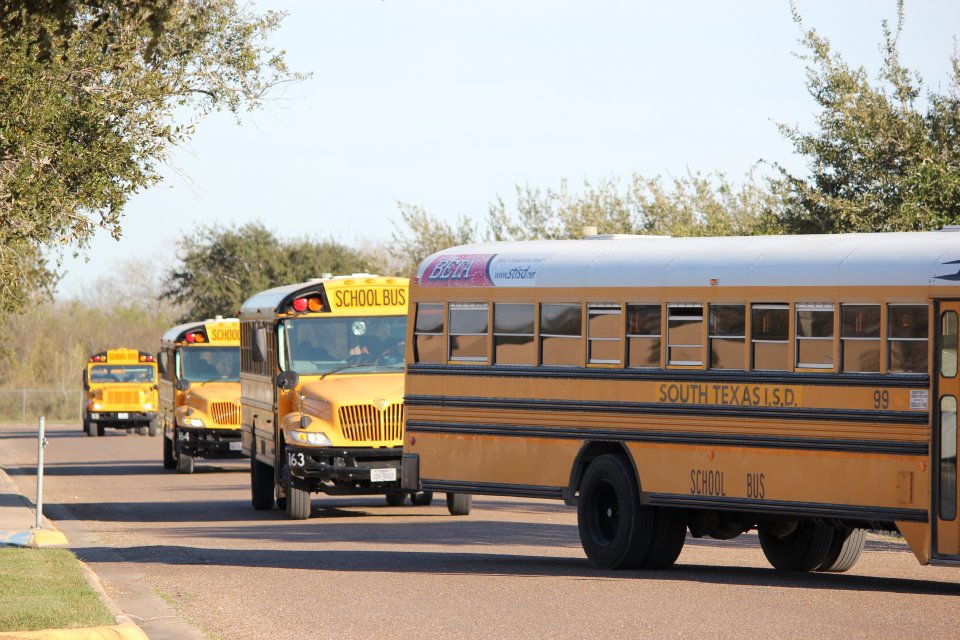
Momentum to eliminate South Texas ISD’s taxing authority increased early this week as two more Rio Grande Valley school districts approved resolutions supporting the push.
To that effect, State Representative Sergio Munoz, Jr., D-Palmview, confirmed plans to introduce legislation on the issue in as soon as two weeks.
Meanwhile, STISD responded to criticism of its funding mechanisms, calling some of it inaccurate and untrue while responding to pointed criticism.
Critics, including the McAllen and Edinburg school districts, describe that funding structure as allowing the district to rake in double the amount of funds compared to other districts in the area under a system that originated when it was formed as a school for people with disabilities in the 1960s.
A multi-pronged thrust against the district’s funding claims it can lead to issues in transparency; that it no longer fulfills the mandate it was originally intended to; that not all students living in its bounds are guaranteed enrollment; and — significantly — that the funding structure gives South Texas ISD an unfair edge over competing educational institutions.
DISTRICT PRESSURE
McAllen and Edinburg school trustees added their support to eliminating STISD’s taxing authority this week, with trustees describing it as a necessary step for equitable funding of South Texas school districts.
“This is not anything against South Texas ISD as an entity, or any of their board members or any of their administrators or any of their educators or any of their students. I think they do a great job in what they do. This is about fair funding for all of us,” McAllen Trustee Marco Suarez said during his board’s meeting Monday.
Under its current funding structure, the district taxes residents in Cameron, Willacy and Hidalgo counties. Residents living in the bounds of traditional school districts also pay taxes to those entities.
McAllen ISD’s resolution contends that South Texas ISD enrolls less than 1% of special education students and has strayed from its original mandate. The district only educates 10 students in the McAllen district’s boundaries, the resolution said.
The South Texas Association of Schools, an advocacy group, said two other Valley districts have already approved supporting that funding change and more are expected to join.
The state allowed STISD to operate magnet schools in the 1980s. The district has gradually expanded since then, marketing itself as a premier education system.
It’s not clear why local districts have decided to take aim at the district’s funding mechanism now, although signs point toward it being tied to increased competition for student enrollment and associated funding.
In recent years, traditional Valley districts have pursued maintaining enrollment vigorously, often attributing declines in students to non-traditional districts encroaching on their turf.
“South Texas ISD was initiated in 1964 not to compete with us. And it has evolved and grown into something else, and enrollment is an issue. And I don’t think that we should be competing with South Texas ISD,” Trustee Debbie Crane Aliseda said Monday.
Superintendent Mario Salinas of Edinburg animatedly described STISD’s funding structure to his board Tuesday as little more than a ripoff.
He said the district has ”abandoned the mission” of serving children with disabilities and that STISD offers nothing residents can’t find in their home district, unfairly burdening taxpayers with an extra tax.
“Our property owners in Hidalgo County, they pay two independent school districts for the same service. Nowhere else in the state of Texas does that happen,” Salinas said.
Perhaps, most starkly, Salinas laid out the difference between his district and STISD’s fund balances: the money they have sitting in a bank.
With some 5,000 students, he said, South Texas ISD has $88 million in its fund balance. Edinburg has $64 million with an enrollment of 34,000 students.
Salinas called the inequity in funding “glaring” and said McAllen and Edinburg won’t be alone in pressing for change. In fact, he said he expects every district in the Valley to join the push.
“They’re all 100% behind it. Every single superintendent is supporting it — except South Texas ISD,” Salinas said.
That statement was met by chuckles and a quip about STISD’s enviable financial situation.
The Edinburg school district approved the resolution just before 7:30 p.m.
STISD RESPONSE
South Texas ISD responded to the legislative push and what it described as hostile districts with a beefy statement Tuesday, defending its revenue system and rebutting several of the criticisms laid out against it.
Specifically, the district rebuffed the “double tax” argument against it, largely on grounds that its taxes are lower.
The district claims its taxes are significantly less than taxes levied by other school districts in the area, arguing that it taxes the average household only $64 annually.
“Although STISD has taxing authority, the taxation for RGV residents within the three counties served is not double, as the rates collected by STISD and other local school districts differ considerably,” the statement reads.
The district describes fiscal responsibility and transparency as “cornerstones” of its operations, evidently responding to a claim made by the South Texas Association of Schools that the district has so much money it doesn’t have to go out for bonds and can operate more secretly.
The district’s structure, STISD argues, comes with its own challenges, which include less federal funding and logistical issues.
“Although we have taxing authority over a large geographical area, as a district so spread out, there are also unique challenges that come with the set-up that other districts do not face, like providing transportation across three counties,” the statement reads.
Criticism of the district includes enrollment not being guaranteed to everyone in the region STISD taxes. The district said enrollment is open to any students living in the three counties it serves in the grade levels it offers.
That enrollment begins on a particular date annually — this Saturday, coincidentally.
The district’s website does, however, note that enrollment is processed on a first-come, first-serve basis contingent on available space.
“STISD wants all families from the communities served to have the opportunity to participate in our district and programs, if they so choose, and we continue to offer free bus transportation to students throughout the three counties,” the statement reads.
The district also made an argument that it continues to fulfill, at least in part, its original mission to educate children with disabilities.
“We have also maintained our emphasis on students with special needs through our Career & Technical Education Half-Day program, a collaborative effort we have in place with sister school districts throughout the RGV, whereby students take the majority of their academic courses at their home district and take CTE courses through STISD,” the statement reads.
Perhaps the district’s most central argument is that it’s an institution worth paying for. The statement notes STISD’s commitment to college, career and life skills; its state and nationally recognized programs; and its new, innovative virtual campus.
“The group that established STISD anticipated the positive changes vocational magnet schools could bring to our region, and worked hard to put this district in place to do just that,” the statement said. “With multiple generations of successful alumni across the region, the state, the nation and the world, we take pride in what we have built over the last half-century for the RGV.”
LEGISLATIVE RUMBLINGS
So far, no Valley lawmakers or neighboring districts appear to be riding to the South Texas ISD’s defense.
State Representative Terry Canales, D-Edinburg, said Sunday that he would consider legislation on the district’s taxing status.
On Monday, Rep. Munoz said he’s currently drafting a bill.
Both say they’re responding to concerns voiced by other school districts in the area. Canales says he met with a group of Valley superintendents in December.
“Right now, the residents of Hidalgo, Cameron, and Willacy County are being double taxed to support both their local independent school district and South Texas ISD, even though our children are only guaranteed access to their local school districts,” he wrote in a statement.
It’s not yet clear how exactly eliminating STISD’s taxing authority would work. A bill drastically restructuring the district’s funding cannot leave the district “high and dry,” Munoz said.
“You can’t leave it empty. You have to replace that funding source with something else. The thing is, what would it be?” he said.
Munoz said his office has not yet spoken with STISD and is working to acquire more information on its funding.
Traditional school districts tax residents in their boundaries. Munoz said it would be difficult to apply the same sort of concept to STISD.
“It would be hard to winnow it down to the individual households, because they’re spread out within the three-county region,” Munoz said. “But it’s definitely an ongoing discussion, it’s probably going to be up for debate in this upcoming session. It should have that discussion.”
PREVIOUS COVERAGE:
School boards may push to remove South Texas ISD taxing authority




